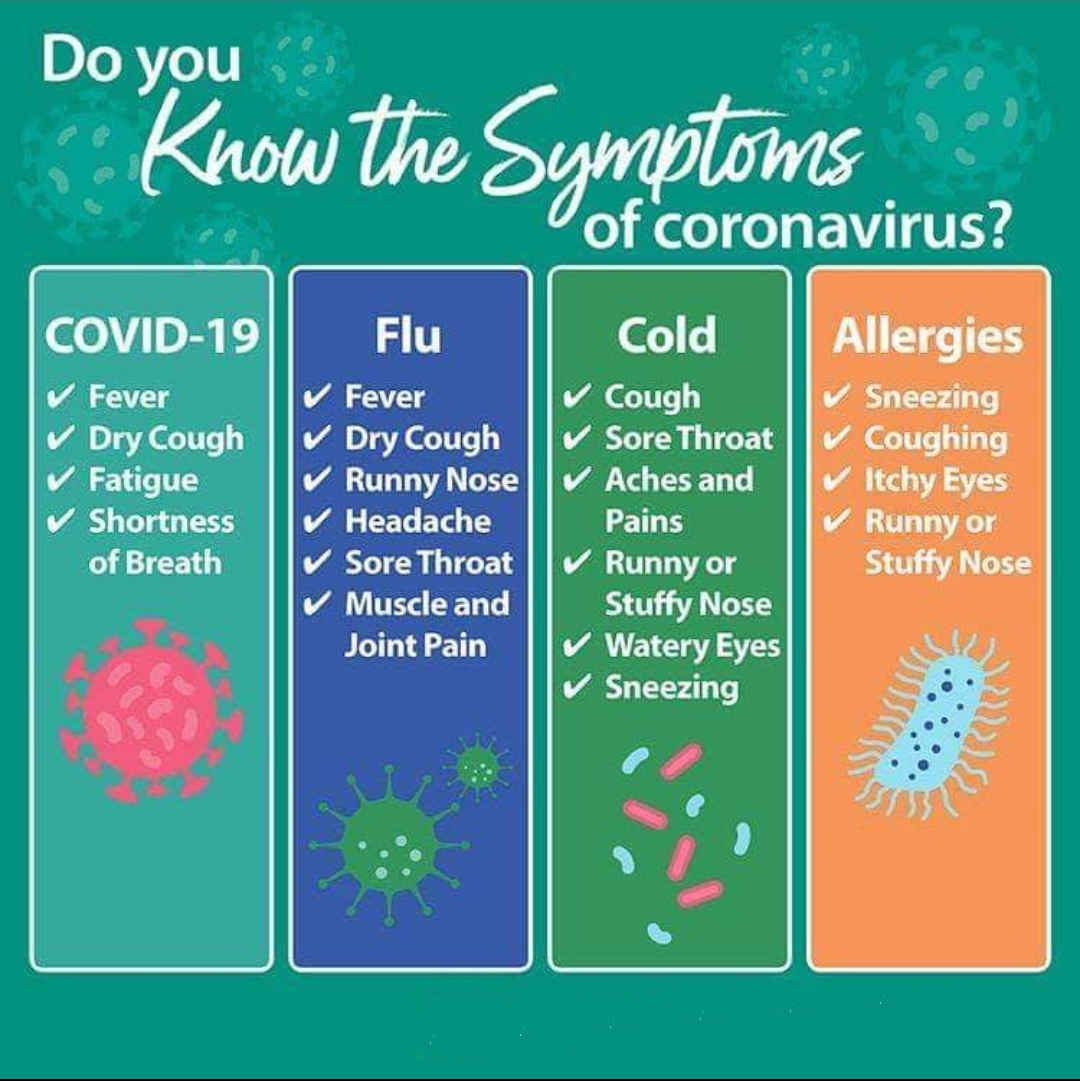What is COVID-19?
We have been told how to prevent the spread of COVID-19, but many of us do not know what the virus actually is, or how the symptoms differ from that of a normal cold, flu, or allergies. The following is the best explanation we have found on what it is, what the symptoms are, and why we must be diligent with social distancing, hand washing, and not touching our face.
The virus is not a living organism, but a protein molecule (DNA) covered by a protective layer of lipid (fat), which, when absorbed by the cells of the ocular, nasal or buccal mucosa, changes their genetic code (mutation) and converts them into aggressor and multiplier cells.
Since the virus is not a living organism, but a protein molecule, it is not killed, but it does decay on its own. The disintegration time depends on the temperature, humidity and type of material where it lies.
The virus can be airborne by a sneeze or cough when you are in close contact with a person having the coronavirus (social distancing), or it can adhere to surfaces (hand washing).
The virus is very fragile; the only thing that protects it is a thin outer layer of fat. That is why any soap or detergent is the best remedy, because the foam CUTS the FAT (that is why you have to rub so much: for 20 seconds or more, you want to make a lot of foam). By dissolving the fat layer, the protein molecule disperses and breaks down on its own.
HEAT melts fat. You should use water that is at least 25 degrees Celsius for washing hands, clothes and anyything else you can wash in hot water. In addition, hot water also helps soap foam up better to help cut through the layer of fat.
Alcohol or any mixture with alcohol over 65% DISSOLVES ANY FAT, especially the external lipid layer of the virus.
A mix of 1 part bleach and 5 parts water directly dissolves the protein.
Vinegar is NOT useful because it does not break down the protective layer of fat.
Vodka and spirits do not work. The strongest vodka is 40% alcohol by volume, and you need 65% alcohol to break down the fat.
The virus is not a living organism like bacteria; they cannot kill what is not alive with antibiotics, but you can quickly disintegrate its structure using the methods above.
NEVER shake clothing, sheets, cloth or other surfaces that may be contaminated and become airborne. When the virus molecule is stuck to a porous surface it is inert and will slowly disintegrate. The following are estimates on how long it may survive before breaking down.
• 3 hours (fabric and porous)
• 4 hours (copper, a natural antiseptic; and wood)
• 24 hours (cardboard)
• 42 hours (metal)
• 72 hours (plastic). But if you shake it or use a feather duster the virus molecules float in the air for up to 3 hours!
The virus molecule remains very stable in cold environments or air conditioned homes and cars. They also need moisture to stay stable, and especially darkness. Therefore; dehumidified, dry, warm, and bright environments will degrade it faster.
The more confined the space, the more concentration of the virus there can be. The more open or naturally ventilated, the less.
The virus needs an entrance to the body, but CANNOT go through healthy skin. This is why you should not touch your face (nose, eyes, mouth), and why you wash your hands if you touch a surface that may be contaminated!
This has been said many times; but, -wash your hands before and after touching mucosa, food, locks, knobs, switches, remote control, cell phone, watches, computers, desks, TV, and so on, and of course anything someone else may have touched and after using the bathroom.
Use hand cream to keep your hands from cracking. Your hands will dry out from the constant washing, and the molecules can hide in the micro cracks that form and soap may not get into the cracks to break down the virus molecules. The thicker the moisturizer, the better. Also keep your finger nails SHORT so that the virus does not hide there.
COVID-19, Flu, Cold or Allergy?

We hope this helps you understand the importance of hand washing and social distancing, as well as the difference between the symptoms of the Coronavirus, cold, flu, and allergies. If you find this post helpful, please help us by sharing the link to this article..







